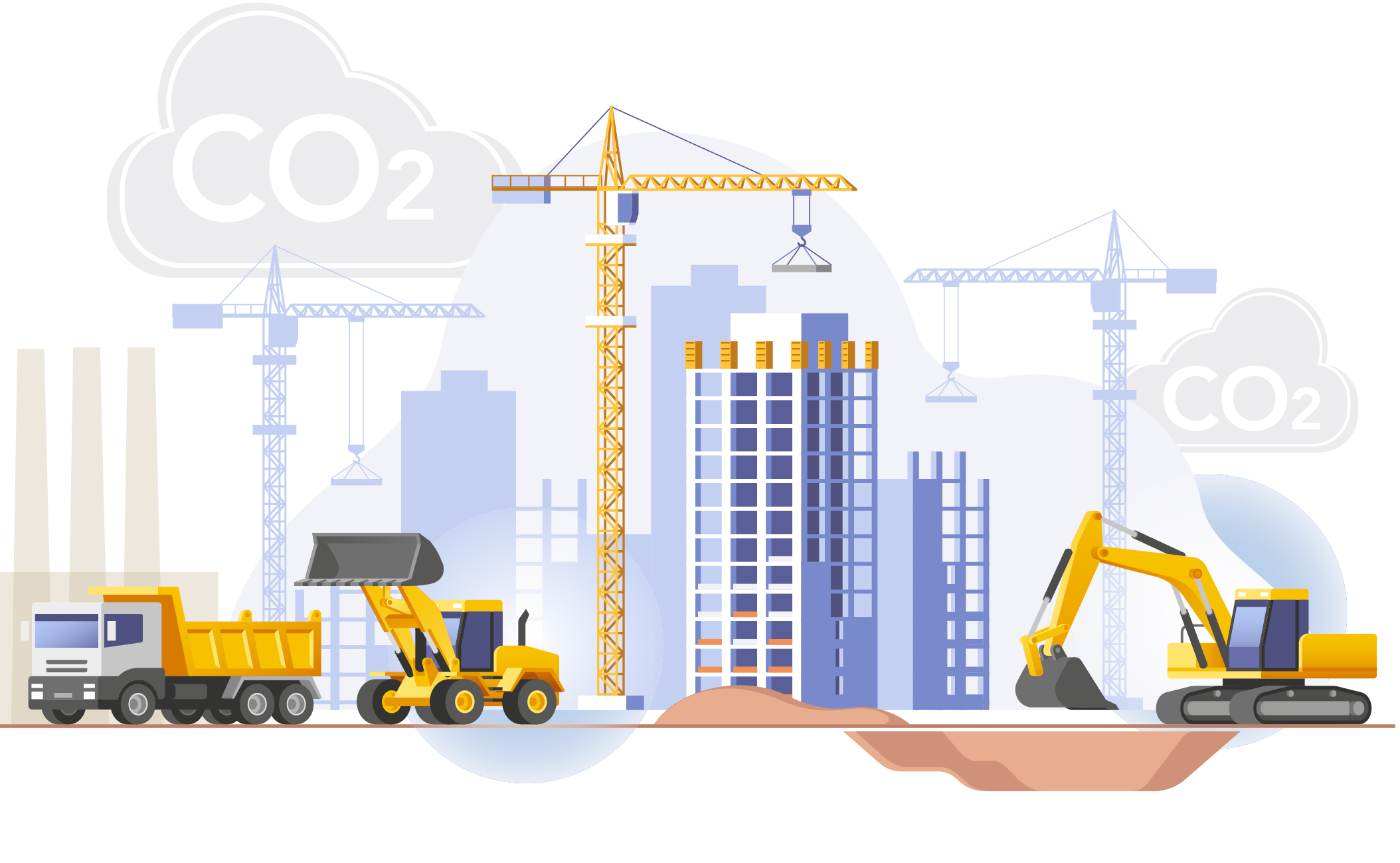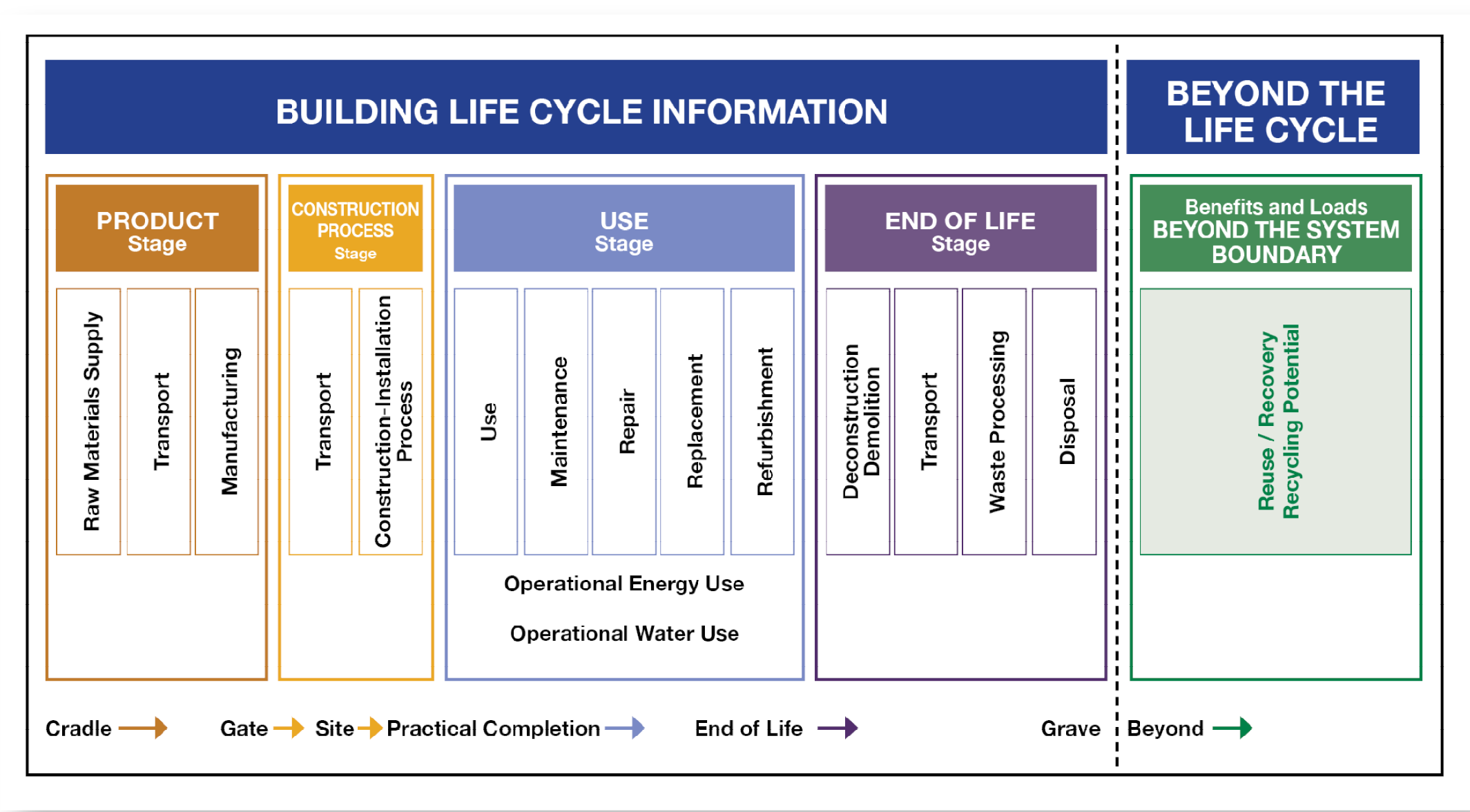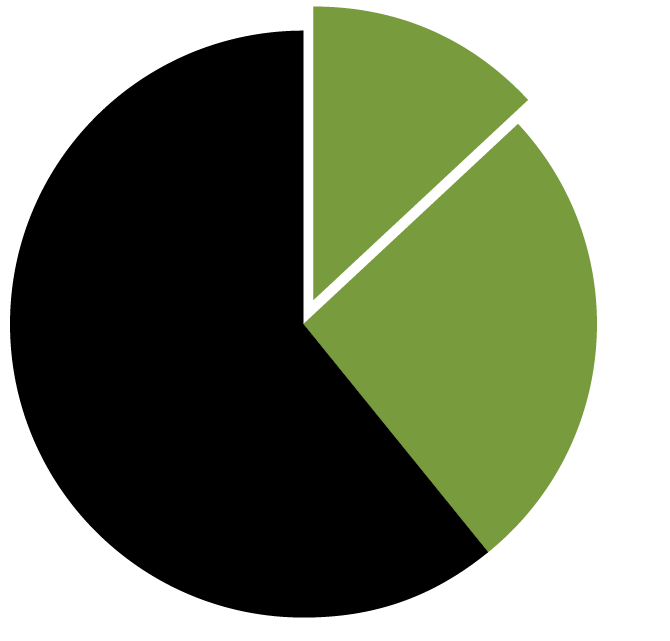
Embodied Carbon and Accurately Measuring the Sustainability of Building Products

Embodied Carbon
Understanding Embodied Carbon, EPDs, and Cradle-to-Gate vs. Cradle-to-Grave.
Rising temperatures and prolonged heat waves are fast becoming the key challenges for our cities and urbanized areas. A white PVC commercial roof can reflect 80% or more of the sun’s rays and emit at least 70% of the solar radiation a building absorbs. Regardless of climate, when the sun beats down, a cool roof will counteract the effects of heat islands formed by heat-absorbing surfaces – dark roofs, concrete, pavement and parking lots – to keep ambient temperatures low.
A Better Way to Measure Sustainability
A more accurate way to measure sustainability is through “cradle-to-grave” calculations, which take into account a product’s entire life cycle. These cradle-to-grave calculations factor in the product’s long-term energy-saving benefits, as well as recycled content, and end-of-life material that is recycled once again, reducing landfill deposits. It’s a much more complete measurement of a product’s environmental impact.
The energy-saving benefits of PVC roofing are well-documented. It’s a product that deserves a more accurate method of conveying embodied carbon to end-users.

Cradle-to-Grave
We’re Committed to Sustainability
39%
The world’s building stock contributes an estimated 39% of the world’s carbon emissions. Less than one-third of that comes from embodied carbon. The remainder is from the energy a building consumes AFTER it is constructed.
PVC roofing reduces this energy consumption.
The Future
We want to increase post-consumer recycling of PVC roofing by 1 million to 1.5 million pounds each year for the next 5-10 years.
White Paper
Read our white paper on why it takes more than just embodied carbon to measure a building material’s sustainability.




